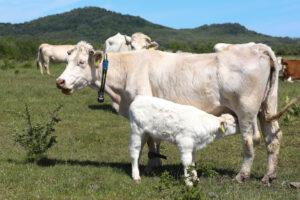The foot-and-mouth disease epidemic is slowly ending, but a solution must be found to its economic effects
The foot-and-mouth disease epidemic affecting even-toed ungulates broke out in our country in March this year. We hope that the epidemiological experts have successfully stopped the further infection of the extremely dangerous and easily spread virus, but the economic effects of the current situation will be felt by the owners of cattle farms for years to come. The most important thing in this situation is the continuous dialogue between farmers and their financiers to find a bridging solution tailored to the business until the affected animals are able to produce again.
 For now, it seems that the experts have successfully curbed the foot-and-mouth disease virus affecting even-toed ungulates, which has been spreading since March. Thanks to the quick steps and compliance with strict regulations, there has been no new outbreak and hopefully there will be none. Nevertheless, the epidemic has caused serious damage to Hungarian farmers, as several thousand animals had to be killed in order to curb the epidemic.
For now, it seems that the experts have successfully curbed the foot-and-mouth disease virus affecting even-toed ungulates, which has been spreading since March. Thanks to the quick steps and compliance with strict regulations, there has been no new outbreak and hopefully there will be none. Nevertheless, the epidemic has caused serious damage to Hungarian farmers, as several thousand animals had to be killed in order to curb the epidemic.
At the same time, in addition to the loss of livestock, indirect damages are also significant – these affect all livestock farms in Hungary. These include export restrictions, restrictions on the free movement of animals in the affected districts, significantly reduced demand by retail chains for designated products originating from the area of infection, and uncertainty among livestock farmers regarding their future investments and tenders. Solving this is an important and very complex task, which can be handled through continuous consultation and a solution based on professional foundations, bringing together domestic and foreign actors and the entire vertical.
In order to mitigate direct damages, farmers are entitled to support from the Wage Guarantee Fund, compensation for slaughtered animals, and a 1-year loan moratorium, within the framework of which the victims do not have to pay either capital or interest. The latter, however, is a solution that requires additional measures from the financing side, since restarting a cattle farm can take between 3-5 years until it can start generating revenue again. Moreover, during the restarting process of the farm, both the fixed costs of the enterprise (farm overhead costs, labor costs, additional maintenance costs, essential repair costs, etc.) and the variable costs (medicine, feed, other production-related costs) appear, which the enterprise must pay continuously, and although the loan moratorium provides a solution for capital and interest costs, it does not cover the above costs.
Related news
Companies are getting tired, individual entrepreneurs are getting stronger – October company trend in light of the new tax package
🎧 Hallgasd a cikket: Lejátszás Szünet Folytatás Leállítás Nyelv: Auto…
Read more >Hungarian exports are gaining new momentum: medium-sized companies are increasingly managing exchange rate risk and opening up to new markets
🎧 Hallgasd a cikket: Lejátszás Szünet Folytatás Leállítás Nyelv: Auto…
Read more >Márton Nagy: fiscal policy will play a greater role in economic recovery
🎧 Hallgasd a cikket: Lejátszás Szünet Folytatás Leállítás Nyelv: Auto…
Read more >Related news
Premium drink, premium literature
🎧 Hallgasd a cikket: Lejátszás Szünet Folytatás Leállítás Nyelv: Auto…
Read more >Responsible Gastro Hero Foundation: a sourdough and kombucha sharing campaign
🎧 Hallgasd a cikket: Lejátszás Szünet Folytatás Leállítás Nyelv: Auto…
Read more >Style, language and tools
🎧 Hallgasd a cikket: Lejátszás Szünet Folytatás Leállítás Nyelv: Auto…
Read more >






